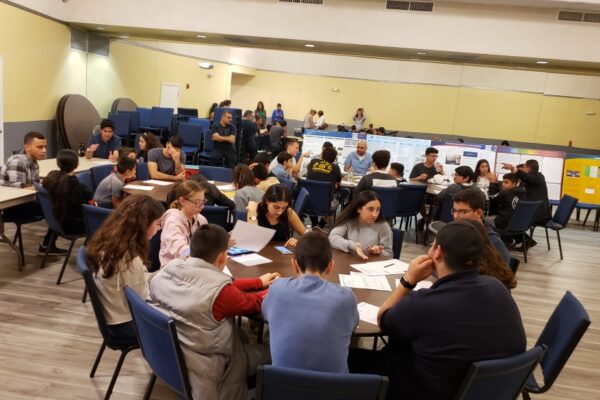The 2025 Moran Award for History of Science Research, presented by the Australian Academy of Science, shines a spotlight on the fascinating history of Australian science. This prestigious biennial award supports researchers delving into the archives to uncover stories of scientific discovery, cultural shifts, and historical milestones. This year, Dr. Joel Barnes and Dr. Jess Urwin have been honored for their groundbreaking projects on science education and Australia’s nuclear science history, respectively. Let’s explore how this award is shaping our understanding of Australia’s scientific legacy and why it matters.
What Is the Moran Award?
The Moran Award for History of Science Research is a beacon for postgraduate students and early-career researchers with a passion for the history of Australian science. Established to honor the contributions of Professor P.A.P. Moran, a distinguished statistician, the award provides up to $10,000 to fund archival research, travel, and accommodation costs. Its mission is to preserve and share Australia’s scientific heritage, particularly by supporting younger researchers who bring fresh perspectives to historical narratives.
Why It Matters
The award empowers researchers to access rare archives, like those held by the Academy of Science’s Fenner Archives, ensuring that stories of Australia’s scientific past are not lost to time. By funding travel to key locations like Sydney, Canberra, or even London, it bridges the gap between researchers and critical historical documents. This support is vital for uncovering hidden stories that shape our understanding of science’s role in society.
Dr. Joel Barnes: Revolutionizing Science Education
Dr. Joel Barnes, from the University of Queensland, is using his 2025 Moran Award to explore the transformative work of Sydney primary school teacher Margaret Simpson (1937–2014). His project focuses on how Simpson adapted an American curriculum, Man: A Course of Study (MACOS), to create People of the Western Desert, a teaching kit that introduced Australian students to cultural anthropology and human evolution through the lens of Pintupi Aboriginal families.
The Impact of People of the Western Desert
Simpson’s kit, widely used in New South Wales and the Australian Capital Territory, was groundbreaking in the 1970s and 1980s. It used ethnographic films to teach students about Aboriginal cultures during a time of evolving Indigenous-settler relations. Barnes’ research will shed light on how this curriculum shaped young minds, navigating controversies over its secular and evolutionary perspectives, particularly in Queensland. His work will also facilitate the donation of privately held archives to public collections, preserving this history for future generations.
A Personal Connection
As a former history student, I remember stumbling across old educational materials in a dusty school library—textbooks that felt like portals to another era. Simpson’s work resonates with me because it shows how teachers can spark curiosity about complex topics like human evolution. Barnes’ project reminds us that education isn’t just about facts; it’s about weaving stories that connect us to our shared humanity.
Dr. Jess Urwin: Tracing Australia’s Nuclear Science History
Dr. Jess Urwin, from the University of Tasmania, is diving into Australia’s nuclear science history, focusing on the mid-20th century’s imperial scientific networks. Her project examines the role of Australian scientists, like Professor Mark Oliphant, in the exploration and export of radioactive minerals, particularly uranium, during and after World War II. Her research will draw on archives in Australia and the UK to uncover how these networks shaped Australia’s nuclear ambitions.
The Untold Story of Uranium Politics
Urwin’s work highlights a lesser-known chapter of Australia’s scientific history: its role in the British Empire’s quest for radioactive materials. By exploring the political, cultural, and scientific dimensions of uranium prospecting, she aims to contribute to ongoing discussions about Australia’s nuclear policies. Her research trips to the Fenner Archives and other collections will illuminate the intricate ties between Australian and British scientists during a pivotal era.
Why This Hits Home
Growing up in a mining town, I’ve seen firsthand how resource extraction shapes communities and economies. Urwin’s project feels personal because it digs into the human stories behind Australia’s uranium industry—stories of ambition, innovation, and ethical dilemmas. It’s a reminder that science isn’t just about discoveries; it’s about the people and politics that drive them.
Why the Moran Award Stands Out
The Moran Award is unique in its focus on the history of science, a niche yet vital field that bridges science and humanities. Unlike broader research grants, it targets archival access, ensuring that researchers can unearth primary sources that might otherwise remain untouched. Here’s what makes it special:
- Targeted Support: Funds travel and accommodation, removing financial barriers for young researchers.
- Focus on Youth: Prioritizes postgraduate students and early-career researchers, fostering new talent.
- Preservation of History: Encourages the donation of private archives to public institutions.
- Biennial Opportunity: Offers $10,000 every two years, with applications reopening in February 2026.
Comparison with Other Australian Research Grants
To understand the Moran Award’s value, let’s compare it to other funding opportunities for 2025:
| Grant/Award | Funding Amount | Focus Area | Eligibility | Application Deadline |
|---|---|---|---|---|
| Moran Award for History of Science | Up to $10,000 | History of Australian science | Postgraduate students, early-career researchers | February 2026 (biennial) |
| Research Block Grants (CGS) | Varies | General higher education research | Higher education institutions | Ongoing |
| Max Day Award | Varies | Ecosystem productivity, microplastics | Early-career researchers | Closed for 2025 |
| EMCR Mobility Grants | Up to $110,000 | International research collaboration | Early- and mid-career researchers | Closed for 2025 |
The Moran Award’s niche focus on historical research sets it apart, offering targeted support for projects that might not fit broader funding schemes.
Pros and Cons of the Moran Award
Pros
- Financial Support: Covers travel and accommodation, critical for accessing distant archives.
- Career Boost: Enhances CVs for early-career researchers, opening doors to further opportunities.
- Cultural Impact: Preserves Australia’s scientific heritage for future generations.
- Flexibility: Funds can be used for various expenses, tailored to project needs.
Cons
- Biennial Cycle: Available only every two years, limiting access for some researchers.
- Niche Focus: Restricted to history of science, excluding other disciplines.
- Competitive: Limited funding means not all applicants receive support.
People Also Ask (PAA)
What is the Moran Award for History of Science Research?
The Moran Award supports postgraduate students and early-career researchers studying the history of Australian science. It provides up to $10,000 for archival research, travel, and accommodation, aiming to preserve Australia’s scientific legacy.
Who won the 2025 Moran Award?
Dr. Joel Barnes (University of Queensland) and Dr. Jess Urwin (University of Tasmania) were awarded the 2025 Moran Award for their projects on science education and nuclear science history, respectively.
How can I apply for the Moran Award?
Applications for the 2027 round will open in February 2026. Candidates must submit a CV, project outline, budget, and two referee reports via the Australian Academy of Science’s online portal.
Where can I access Australian science archives?
Key archives include the Australian Academy of Science’s Fenner Archives in Canberra, the National Archives in London, and state libraries in Sydney and Canberra. Contact awards@science.org.au for guidance.
What are the best tools for historical research in Australia?
Tools like Trove (trove.nla.gov.au) for digitized newspapers, the National Library of Australia’s catalog, and archival databases like the Fenner Archives are invaluable for researchers.
The Broader Impact of the Moran Award
The Moran Award doesn’t just fund research; it breathes life into stories that might otherwise fade. By supporting projects like Barnes’ and Urwin’s, it ensures that Australia’s scientific past informs its future. These stories—of innovative teachers like Margaret Simpson and ambitious scientists like Mark Oliphant—remind us that science is a human endeavor, shaped by culture, politics, and passion.
A Ripple Effect
Barnes’ work could inspire educators to rethink how science is taught, emphasizing cultural context and inquiry-based learning. Urwin’s research might influence modern nuclear policy debates, offering historical insights into Australia’s role in global science. Together, these projects highlight the award’s role in connecting past and present.
A Touch of Humor
Imagine Dr. Barnes sifting through dusty archives, only to find a 1970s teacher’s note scribbled in the margins: “Kids loved the Pintupi films, but they keep asking if evolution means they’re related to kangaroos!” Or Dr. Urwin uncovering a letter from Oliphant joking about the challenges of convincing governments to fund uranium hunts. These human moments make history come alive, and the Moran Award ensures they’re not forgotten.
FAQ Section
What is the purpose of the Moran Award?
The Moran Award funds research into the history of Australian science, supporting access to archives for postgraduate students and early-career researchers. It covers travel and accommodation costs, up to $10,000.
Who is eligible for the Moran Award?
Postgraduate students and researchers with expertise in Australian science history can apply. The award prioritizes younger researchers and is open to all genders.
How often is the Moran Award offered?
The award is biennial, with the next application round opening in February 2026 for 2027 funding.
What kind of projects does the Moran Award support?
It supports projects exploring the history of Australian science, such as science education, nuclear science, or environmental studies, with a focus on archival research.
Where can I learn more about the Moran Award?
Visit the Australian Academy of Science’s website (www.science.org.au) for details on eligibility, guidelines, and application processes.
How to Get Involved
For aspiring researchers, the Moran Award is a golden opportunity. Start by exploring the Australian Academy of Science’s website for application guidelines and past awardees’ projects. Connect with institutions like the University of Queensland or the University of Tasmania for mentorship. Tools like Trove and the National Library of Australia’s archives can help you brainstorm project ideas. If you’re passionate about Australia’s scientific history, mark February 2026 on your calendar for the next application round.
A Final Thought
The 2025 Moran Award reminds us that science isn’t just about breakthroughs; it’s about the stories, people, and ideas that shape our world. Whether it’s a teacher inspiring students with Aboriginal culture or a scientist navigating imperial politics, these narratives matter. As Dr. Barnes and Dr. Urwin dive into their research, they’re not just uncovering the past—they’re building a bridge to a more informed future. So, here’s to the Moran Award: a small fund with a big impact, keeping Australia’s scientific heritage alive, one story at a time.





